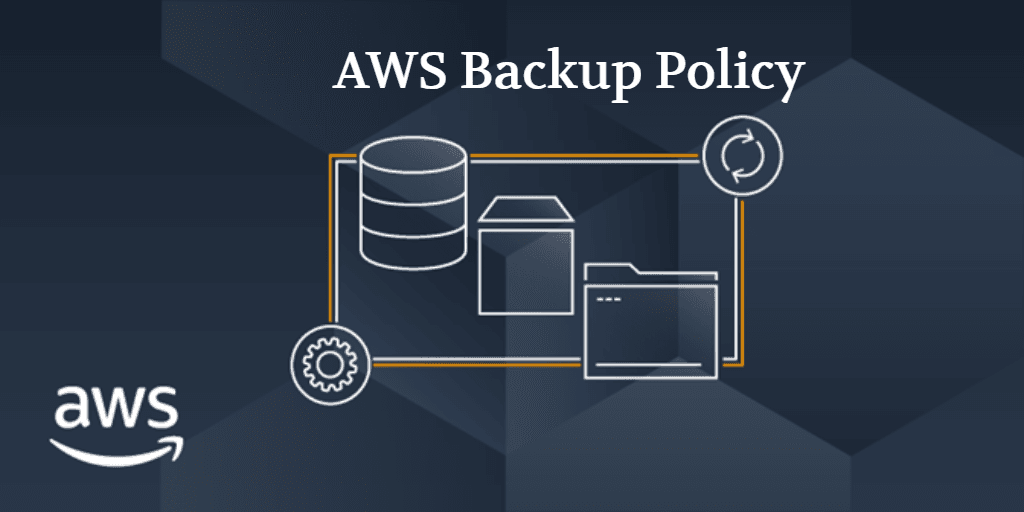As businesses increasingly embrace cloud storage, understanding and implementing effective S3 backup policies become imperative.

S3 backup policies refer to the rules and procedures put in place to regularly and automatically back up data stored in Amazon S3 buckets. These policies dictate the frequency of backups, the storage destination, and the retention period for archived data. The significance lies in mitigating the risk of data loss and ensuring business continuity.

AWS S3 is a reliable and scalable storage solution, ensuring that valuable data is protected and can be recovered in case of accidental deletion, system failures, or cyber threats. A well-crafted backup strategy adds an extra layer of protection, offering a point-in-time recovery mechanism.
While S3 backup policies are integral, challenges may arise during their implementation. Issues such as misconfigurations, incomplete backups, or difficulties in data restoration are common. Awareness of these challenges is the first step toward crafting effective policies that address potential pitfalls.
Selecting the right S3 backup policy requires a careful evaluation of various factors to ensure it aligns with your business needs and the unique characteristics of your AWS S3 environment.
❇ Security Measures: Assess the encryption methods and access controls supported by the backup policy to guarantee the confidentiality and integrity of your data. ❇ Scalability: Consider the scalability of the backup solution to accommodate the growing volume of data in your S3 buckets. ❇ Ease of Implementation and Management: Opt for a solution that integrates seamlessly with your existing infrastructure and offers user-friendly management interfaces. ❇ Integration with Other AWS Services: Ensure that the chosen backup policy integrates well with other AWS services, facilitating a cohesive and comprehensive cloud strategy.
You have the option to create backup policies in fragmented segments that are inherited and combined to form a comprehensive policy for each member account. However, this approach comes with the risk of having an effective policy that remains incomplete if changes are made at one level without considering their impact on all accounts below that level. To mitigate this risk, we recommend ensuring that the backup policies implemented at all levels are independently complete. Consider the parent policies as default settings that can be overridden by specifications in child policies. This ensures that even if a child policy is not present, the inherited policy remains complete and adheres to default values. To manage the addition, modification, or removal of settings by child policies, utilize the child control inheritance operators. This approach provides a more robust and foolproof method of maintaining comprehensive backup policies across different account levels.
AOMEI Cyber Backup, with its robust features and integration with Amazon S3, provides a secure, reliable, and cost-effective solution for archiving data. Whether for individual use or business needs, this powerful combination ensures your data is protected and easily retrievable, leveraging the strengths of AWS's cloud infrastructure.
📌User-Friendly Interface: AOMEI Cyber Backup offers an intuitive interface that simplifies the backup process, making it accessible even for users with minimal technical knowledge.
✨Flexible Backup Options: It supports a variety of backup types, including full, incremental, and differential backups, allowing you to customize your backup strategy according to your needs.
🚩Automation and Scheduling: The software allows you to schedule backups to run automatically at specified times, ensuring your data is consistently backed up without manual intervention.
✍Cost-Efficiency with AWS Storage Classes: By integrating with Amazon S3, AOMEI Cyber Backup lets you choose from different storage classes (Standard, Infrequent Access, Glacier, and Glacier Deep Archive), optimizing storage costs based on your data access patterns.
🔰High Reliability: Known for its reliable performance, AOMEI Cyber Backup minimizes the risk of backup failures, ensuring that your data is always safe and recoverable.
📢 Archive Data to Amazon S3 Using AOMEI Cyber Backup
1. Click Target Storage > Amazon S3 > Add Target to open the add target page. Enter your Amazon S3 credentials including username, keyword, and bucket name, then click Confirm. Ensure you have the necessary permissions set up in your AWS account.
2. Click Backup Task > Create New Task to starting archiving your important data to Amazon S3. Select File Backup (for example) and choose files or folders for backup.
3. Check Archiving backup versions to Amazon S3 and click Select to choose the added Amazon S3.
4. Schedule backup task to run daily/weekly/monthly, and select backup retention policies to delete old backups automatically.
5. Click "Start Backup" to begin the backup process. It will first create a backup locally or on the NAS and then upload the backup to Amazon S3.
By using AOMEI Cyber Backup to back up your data to Amazon S3 Glacier Deep Archive, you can benefit from a reliable, secure, and cost-effective backup solution tailored to long-term data storage needs.
S3 backup policies play a pivotal role in securing your data stored in AWS S3. Understanding their importance, defining clear policies, and considering key factors during the selection process are essential steps toward safeguarding your business-critical information. Embrace the power of S3 backup policies to fortify your data security and embrace the full potential of cloud storage with confidence.